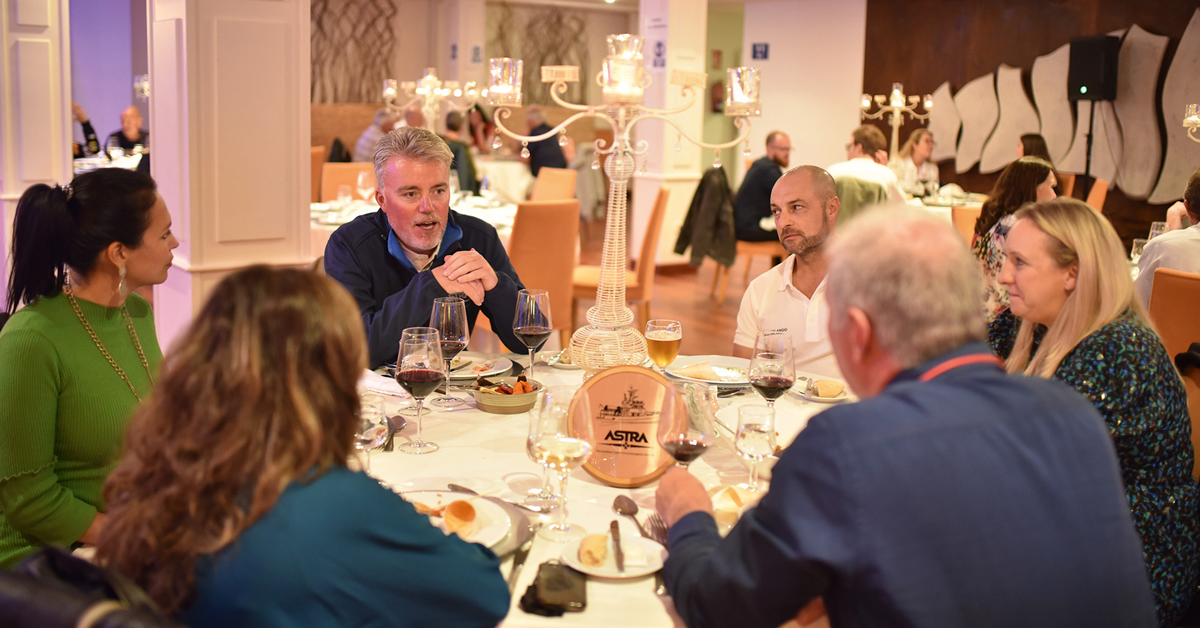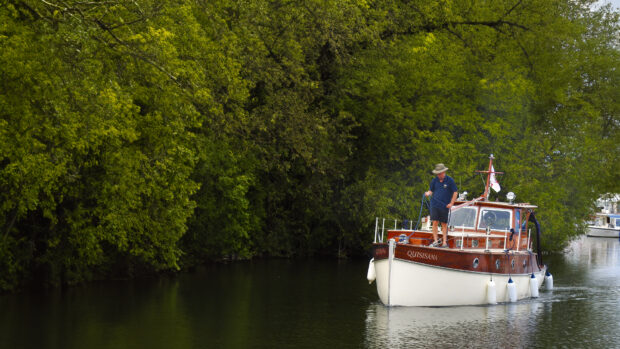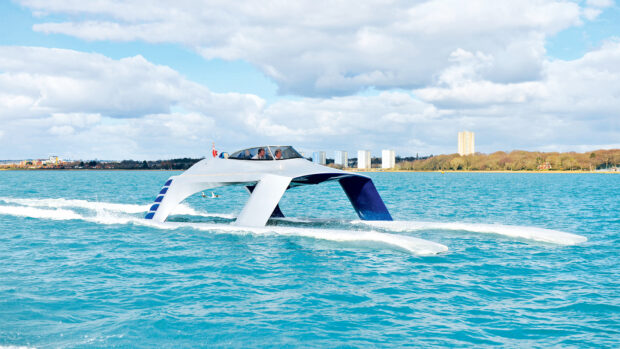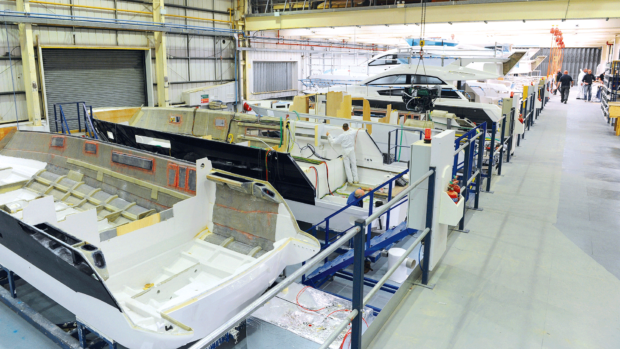Iain Macneil’s plan to be the first person to circumnavigate the world via the southern capes in a sub-24m motoryacht takes shape. First up, finding and fine-tuning the perfect boat.
This is Part Two of Iain’s round-the-world expedition. Make sure to read Part One first.
It was incredibly exciting to have a firm sense of the requirements I was looking for in a boat capable of circumnavigating the globe via the Southern Oceans, but was there actually such a boat out there?
From the spec list I had drawn up, I assembled a broad search in the best tradition of MBY’s ‘Find Me a Boat’ series. My list of requirements were as follows:
- £1-2million
- 24 metres in length
- Steel hull (in excellent condition)
- All-weather capable
- First-class machinery
- Capable of long-distances
- Suitable space above or below decks to increase fuel capacity
I had a broker to assist with negotiations but I knew it would be down to me to make the final decision. I searched through the greater part of 2019 with a view to commencing our circumnavigation on 1 December 2021.
Article continues below…

Around the world in a 24m boat: Part one – How Iain Macneil found MV Astra

Special delivery: How lockdown turned a routine Med journey into a 25-day epic
Initially, I narrowed down the search to former rescue, research and navy patrol vessels, while keeping an eye on converted steel fishing craft.
However, the majority of these were built in the 1960s and 1970s – fine for a week or two at sea but not robust enough for 5-6 months in extreme weather.
In May 2019 I came across a listing for a 76ft former Swedish search and rescue vessel built in 1995 called Astra, advertised for sale on a Swedish website at €1.5m.

Astra in her Swedish search and rescue days
Almost immediately I experienced an exhilarating feeling that this could be the right boat, but the timing was wrong. I hadn’t planned to make a purchase until early 2021, so the finance wasn’t in place yet.
Regardless of this, my broker advised an exploratory chat with the selling broker. We wanted them to know we were serious buyers and would like a chance to see it and look into funding.
But we were too late. A German buyer had pipped us to the post and already made an offer – Astra was being taken off the market.

As she looked in 2019 when she was listed for sale
I felt incredibly deflated. I’d spent two years looking at thousands of boats. I could have entered Mastermind with my specialist subject as “Steel boats between 20-30 metres” – and yet I had nothing to show for it.
Despite this setback, I spent most of the summer on Silver Dee, the 52ft GRP trawler yacht I had bought as a kind of dry run for the main event, taking her to my home in Barra and out to the remote Atlantic outcrop of St. Kilda. But as autumn set in, there were still very few new listings that caught my eye.
However, in November 2019, just as we were about to fly to Singapore for work, Astra popped up again.

Astra lifted and ready for the refit to begin
My broker was immediately on the case and discovered that the sale had fallen through. Yet again, the timing wasn’t great.
I wasn’t due back in Scotland until Christmas, in January we were flying to Panama (to update the Passage Planning Guidelines: Panama Canal and Approaches, which our company Witherbys publishes), and straight afterwards we were booked on an exploratory trip to Cape Horn.
In short, I wasn’t free to see Astra until March 2020. To make matters worse, Covid had now started to spread across Europe and travel was only going to get harder so I flew to Gibraltar on 9 March.

Note the new fashion plates linking the Portuguese bridge to the side decks and the fore and aft sets of folding DMS Holland Magnus Master stabilisers that rotate at speed to reduce roll in a seaway
The moment I saw Astra I was in love. I told the seller this was the boat for me but that I was going to look at one other in Valencia and two in Barcelona later in the week (only one of which was anywhere near a match for Astra).
During the middle of these trips, America announced all flights from Europe were about to be cancelled. The deserted airports we had enjoyed all week were now in chaos!
Now that lockdown had been imposed, I felt I was in a strong position to negotiate on Astra, but didn’t know if I could stretch that out until 2021 as originally planned.

The new propeller tunnel increases efficiency.
By August 2020 international travel regulations had eased and the seller was getting anxious, wanting matters concluded by the end of September, so I flew out to Gibraltar again, accompanied by one of the directors of West Coast Marine, who had re-engined Silver Dee.
A friend who’s also a retired ship engineer also joined us, along with my deckhand. We also asked the surveyor who had done such a thorough job on Silver Dee to inspect Astra.
The survey was very thorough and lasted four days. We recorded the seller’s explanations of how everything worked on video so that by the final day I had created checklists for operating every piece of equipment. Six days later, on 1 October 2020 I picked up the keys – finally Astra was mine.
The refit
I spent the next six weeks sailing Astra the 650 miles from Gibraltar to Lanzarote, then creating a detailed inventory of her equipment and spares.
All this was entered into a planned maintenance programme. I then set about creating a detailed refit specification for ship repair yards to tender against and invited three yards in the UK, Netherlands and Lanzarote to quote for it.
However, another hard lockdown in early 2021 meant that only the yard in Lanzarote could actually get to Astra.
Thankfully, when I was able to visit Calero Marinas in Lanzarote in March 2021, I was impressed by the quality of the work they had done so far and appointed them for the rest of the refit.
The spec consisted of no fewer than 150 jobs, including the following key items:
Steelwork
- Fit a 2,000kg Damen Optima tunnel around Astra’s 1.72m propeller to increase efficiency
- Fabricate and fit three aluminium fashion plates each side connecting the bulwarks to the Portuguese bridge
- Fabricate and fit an aluminium mast for the VSAT dome
- Fabricate and fit a structure to house 7 x 1,500-litre external fuel tanks and support two RIBs on the aft deck
- Remove the bow pushing rubber and bring the steel plate flush with the hull
- Improve large access hatch to engine room for lifting by crane
- Fabricate and fit a structure for storing oil drums
Engineering
- Repeat 6,000hr service of Mitsubishi main engine (at 8,400 hrs)
- Service Volvo Penta 40 kVa generator
- Service Cummins Onan 15 kVa generator
- Assess shaft generator
- Service all hydraulics
- Service air compressors and test tanks Inspect and clean interiors of all diesel tanks
Electronics (install the following)
- Sailor Inmarsat VSAT system
- FleetBroadband
- Inmarsat C
- Furuno MF/HF SSB radio
- Furuno 3220 BB chart radar
- Furuno Timezero 4 with worldwide charts
- Furuno wave analyser
- Oscar navigation AI system
- Simrad AP70 back-up autopilot
- Furuno GP170 GNSS
- Furuno SC-70 satellite compass
- Engine and fuel consumption monitoring system
- Marine remote tank gauging system
Accommodation (install the following)
- Large capacity freezer (4 months for 5 crew)
- Large capacity dry store space (6-9 months for 5 crew)
- Low level night lighting
- Combined water chiller/boiler
Painting
- Internal: all engine room bilges cleaned and painted white
- External: full repaint
North Atlantic Sea Trials
The sea trials were not to test Astra, as there were no doubts about her seakeeping, but to determine the parameters for the crew to work and rest without getting fatigued.
I also needed to put on some serious sea miles! At the time of purchase there were only 8,000 hours on the main engine, equivalent to just one six-hour run per week for the 22 years that she was in the Swedish Sea Rescue Service followed by three years laid-up.
After running in the open sea for 1-2 weeks at a time to check everything was working, I wanted to find a more severe test that would break anything that wasn’t going to be up to the rigours of the Southern Oceans before we tackled them in earnest.

Astra on her 2021 sea trials
I chose to go to the North Atlantic west of the UK then on to Iceland, entering the Arctic Circle before returning to Lanzarote via the Baltic.
This would give a sense of achievement and reassurance to the crew, who would see what the boat could do in conditions similar to those in the Southern Oceans.
I was also eager to run the main engine in still water to see which combinations of RPM and pitch (Astra is fitted with a controllable pitch propeller) were the most efficient.

Iain checks his passage planning
I could not do these tests off Lanzarote, where strong NE trade winds and currents would affect the results, so I decided to go to the quiet, deep and negligible tidal stream waters of the Sound of Raasay to the NE of the Isle of Skye, where we spent 60 consecutive hours testing every measurable speed/engine/fuel parameter.
After the speed trials we planned to complete a clockwise circumnavigation of Iceland. However, halfway between the Butt of Lewis and SE Iceland one of the crew got so seasick that we had to call for medical advice.
As a precaution I abandoned the circumnavigation and proceeded to the nearest port, in the Faroe Islands, but still 2.5 days away.

Every item of equipment was tested to breaking point during the North Atlantic trials
Ironically, once we were running with the seas behind us, the crew member regained his strength and we all agreed to set a course due north again.
On 25 August 2021 Astra officially entered the Arctic Circle and from there we set course for the Baltic.
The purpose of going to the Baltic was to review the Passage Planning Guide for the Baltics, another of Witherbys’ publications, with the help of the local pilots.
After an absence of more than five years, we also wanted to take Astra home to Rörö Island, Sweden, where she was stationed in her search and rescue days.
It seemed like the entire population of 240 people came out to greet her.
Final preparations
Before heading back to the Atlantic for our pre-departure preparations, I had booked a 12,000hr service of Astra’s main engine.
The 1,350hp Mitsubishi S6U-TK medium-speed engine (600-1060rpm) is a big beast that requires a recognised service agent, and together with the steering gear, workshop and their associated technical spaces accounts for some 70% of the below deck space.
I chose Vigo in northern Spain for the servicing, as the same engine was commonly fitted to the Spanish deep sea fishing fleet during the 1990s. Over five weeks the engine was carefully stripped and rebuilt.

Resplendent in her new colours, Astra is dressed ready for the start of her circumnavigation
I was pleased, but not surprised, to learn that there were no signs of excessive wear or anything else of concern.
As well as servicing the main engine, we replaced the Cummins Onan 15 kVa generator with a larger 23 kVa one, swapped the 25 kVa shaft generator for a 50 kVa one and upgraded all the breakers on the main electrical switchboard.
We arrived in Vigo on 21 September and left on 5 November to make the six-day journey back to Lanzarote, where Astra would be lifted, cleaned, given a fresh coat of antifouling and fitted with replacement anodes.

The crew pose for a photo before embarking on their sub-24m record attempt
I had settled on a westward course out of Vigo but noticed straight away that the engine didn’t feel right. I could sense it was as tight as a drum.
The cylinder compression readings were as good as new but this wasn’t resulting in improved performance, quite the opposite, our engine was now consuming 15-20% more fuel at each of the settings we’d so carefully measured.
I could have wept – with that loss of performance we wouldn’t have enough fuel to cross the Pacific.

Seven additional 1,500 litre deck tanks enable Astra to cross the Pacific non-stop
We ran the engine at its 600rpm minimum for 12 hours while I frantically checked with the service agent what might be causing the problem.
After 12 hours, I built the speed up to 850rpm but we were still burning 15% more fuel. Eventually, I decided that if the engine simply needed to be run in, a few days thrashing about at this speed should loosen everything up.
Sure enough, four days into the journey, I slowed down to economical speed and saw that the fuel consumption wasn’t just back to what it had been but about 15% better than we’d achieved in the sea trials. I could not have been happier.
The lift-out and hull preparations in Lanzarote all went to plan and having taken on dry stores in Vigo, we turned to filling our freezer. Kat had brought a vacuum packer with her and for a week it ran almost non-stop, vacuuming food for the freezer.
The growing excitement, press interest and television interviews all added to the fanfare of departure. The final afternoon was a blur of activity.

The final farewell party in Lanzarote the night before departure
I left the boat at 6pm to return to our apartment – all the team lived ashore in those last few weeks so the boat was easier to work on.
Our final farewell party for friends and family ended just before midnight, and I drifted off to sleep dreaming of the morning’s departure checklist.
By 10am friends, well-wishers and curious passers-by had amassed around our berth. At 10:40 I asked everyone to leave the boat and by 10:50 Astra was cleared and the main engine started.

And they’re off! Astra motors out of Lanzarote on the start of her epic round the world voyage
At 10:55 I singled up to one mooring line forward and aft. At 10:59 I asked for all lines to be let go and on the stroke of 11am on Wed 01 Dec 2021, marked by the old red and black lighthouse at Puerto Calero sounding its horn, I clutched in the gearbox and eased Astra out of her mooring. We were under way!
First published in the April 2022 issue of MBY.
You can follow Iain’s live location during his round-the-world adventure at: mv-astra.com
If you enjoyed this…
Be first to all the latest boats, gadgets, cruising ideas, buying advice and readers’ adventures with a subscription to Motor Boat & Yachting. Available in both print and digital formats, our monthly magazine will be sent directly to your home or device at a substantial discount to the usual cover price. See our latest offers and save at least 30% off the cover price.










